Crepis Vesicaria: [Characteristics, Cultivation, Care and Disadvantages]
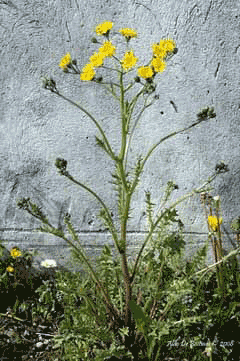
Important points when planting a Crepis vesicaria:
- When? The crepis vesicaria plant can be planted at any time of the year.
- Where? The crepis vesicaria develops on the edges of roads, grasslands, dry fields, rustic uncultivated land, meadows, etc.
- How do we water? Irrigation for crepis vesicaria must be sufficient to maintain humidity, without flooding.
- How often do we water? The frequency of irrigation of thecrepis vesicaria plant will depend on the region where the crop is located, the rainfall level and the environmental temperature.
- What care does it require? Thecrepis vesicaria plant is rustic and does not need great care for its development and proliferation.
- What pests and diseases affect you? Among the pests that can affect crepis vesicaria are aphids, slugs, gray grubs and other caterpillars.
What characteristics does the crepis vesicaria plant have?
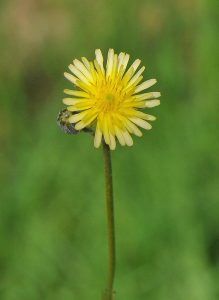
From the Asteraceae family and the Crepis genus, the crepis vesicaria plant is made up of three subspecies, taraxacifolia, congenita and haenseleri.
The crepis vesicaria is a biennial herbaceous plant that can measure between 80 cm to 1.20 meters in height. Its root is pivoting and the stems are branched with an upright, arched or decumbent bearing.
The leaves of the crepis vesicaria are arranged at the base forming a rosette and are oblong-lanceolate covered with villi.
The basal ones are deeply indented into broad, toothed lobes, while the upper ones are less lobed and hugging. The flowers, called «chapters» by botanists, are really a group of tiny flowers that form a single structure. It blooms from March to July.
The color of the flowers of the crepis vesicaria is frequently yellow with a purple back, with a petal or ligule developed on the edge of blue, yellow or, more commonly, white, as in daisies.
Its fruit is an achene (dry fruit with a single seed) muricate and ribbed composed of several rows of simple hairs and with a beak as long as the rest of the fruit. Vesicaria crepis is distributed in southern Europe, northwestern Africa and Micronesia and has become naturalized in much of the world.
The basal leaves of crepis vesicaria can be eaten boiled, fried, or in stews prepared with other herbs. Some medicinal properties are attributed to crepis vesicaria, for which the leaves and seeds are used.
The leaves and seeds of the plant contain essential oil and specifically 3 glucosinolates: glucoerucin, glucoraphanin and gluconasturtin. Trace elements such as fiber, low amounts of tryptophan, provitamin A and vitamin C are extracted from the leaves of the plant.
The seeds of the crepis vesicaria have between 19% and 21% oil that is made up of eicosenoic, palmitic, linoleic, oleic and 45% erucic acid. Some common names for crepis vesicaria are lecherina, chicory, jamardo, and false chicory, among others.
When to sow the crepis vesicaria?
The crepis vesicaria plant can be planted at any time of the year.
Where to plant crepis vesicaria?
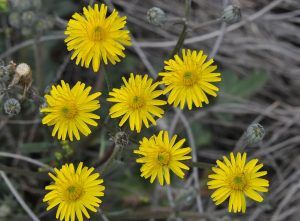
The crepis vesicaria develops on the edges of roads, grasslands, dry fields, rustic uncultivated land, meadows, etc.
It is a plant that grows well when the soils have an acidic, alkaline, very alkaline and neutral pH.
The crepis vesicaria is a very beautiful plant to decorate green walls on a fence or to separate one space from another.
How do we water the crepis vesicaria?
Irrigation for crepis vesicaria must be sufficient to maintain humidity without flooding. The type and form of irrigation will depend on the soil, environmental conditions, temperatures or exposure to direct sunlight.
How often do we water the crepes vesicaria?
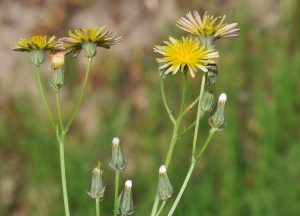
The frequency of irrigation of the crepis vesicaria plant will depend on the region where the crop is located, the rainfall level and the environmental temperature.
Irrigation can be carried out once it is verified that the substrate is dry, but only with moderate irrigation to maintain humidity, without drowning or flooding the plant.
How to sow a crepis vesicaria step by step?
Vesicaria crepis can be grown in seedbeds or directly in the orchard or garden.
- Select crepis vesicaria seeds from a healthy and vigorous plant or purchase them from nurseries.
- Fill the pot with universal substrate for flowering plants, sand and earthworm humus, to offer good drainage capacity.
- Water moderately and without flooding the substrate.
- Locate the crop in a place with full sun.
- Transplant to a larger pot so that the crepis vesicaria can develop well.
What care does the crepis vesicaria need?
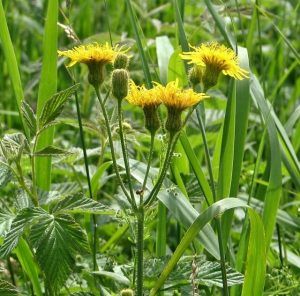
The crepis vesicaria plant is rustic and does not need great care for its development and proliferation.
The soil or substrate for the cultivation of crepis vesicaria must have a sandy, clayey or loamy consistency so that the underground zone of the plant grows abundantly and strongly.
The crepis vesicaria can withstand long periods of dryness. It is a plant that can withstand extreme temperature and humidity conditions. It can be grown in full sun or semi-shade, as it is flexible with its light needs.
What pests and diseases affect the crepis vesicaria?
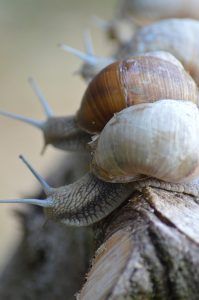 Among the pests that can affect the crepis vesicaria, are aphids, slugs, gray worms and other caterpillars.
Among the pests that can affect the crepis vesicaria, are aphids, slugs, gray worms and other caterpillars.
Aphids are very dangerous insects that suck the sap from the crepis vesicaria. These insects have a great ability to reproduce and can even kill the crepis vesicaria.
Slugs, meanwhile, are a plague that affects all crops and gardens in the world.
They appear when the leaves and fruits of the crepis vesicaria sprout and their presence can be appreciated by perforations in the plant and the slimy trail of their mucus in the lawn and garden.
The diseases that attack crepis vesicaria are mildew and sclerotinia. Mildew is a disease caused by fungi caused by prolonged periods of moisture in the leaves.
Symptoms of downy mildew on crepis vesicaria include angular yellow spots on the upper leaf surface and grayish hairiness on the lower leaf surface.
Specific fungicides must be used to combat downy mildew disease, but once the fungus becomes active it will be more difficult to control. Sclerotinia, also known as white mold, affects the young stems of crepis vesicaria.
It is a fungal disease that can cause root rot, stem rot, blight rot and petiole rot on the plant leaf. Among the symptoms of the presence of Sclerotinia in crepis vesicaria are light brown lesions that form on the stems, leaves or flowers.
To control the fungal diseases that affect the crepis vesicaria, the most important thing is the prevention and control of irrigation and humidity in the plant.
Bibliographic references
- Crepis vesicaria (Asteraceae), new record for Argentina, CB VILLAMIL – Hickenia, Darwinion Bulletin, 1999 – sidalc.net
- Crepis alpina in Spain, MM Talavera Solís … – … Malacitana, 38, 229 …, 2013 – idus.us.es
- Uses and properties of wild edible plants of the Asteraceae family, MT Pretel, M Sánchez, V Pérez, C Obón – Revista de Industria…, 2008 – horticom.com
- Crepis sect. Lepidoseris sensu babcock in the Iberian Peninsula and the Balearic Islands, MM Talavera Solís … – … Malacitana, 38, 231 …, 2013 – idus.us.es
- Precisions and corrections on some Crepis (Asteraceae) of the Balearic flora, JXS Marí – Anales del Jardín Botánico de Madrid, 1998 – dialnet.unirioja.es


![Photo of When, Where and How to Plant Pumpkins in your Garden in [12 Steps]](https://www.complete-gardening.com/wp-content/uploads/2022/08/when-where-and-how-to-plant-pumpkins-in-your-garden-in-12-steps-390x220.jpg)


![Photo of Caring for Indoor Plants: [Pruning, Light, Substrate and Humidity]](https://www.complete-gardening.com/wp-content/uploads/2022/08/caring-for-indoor-plants-pruning-light-substrate-and-humidity-390x220.jpg)